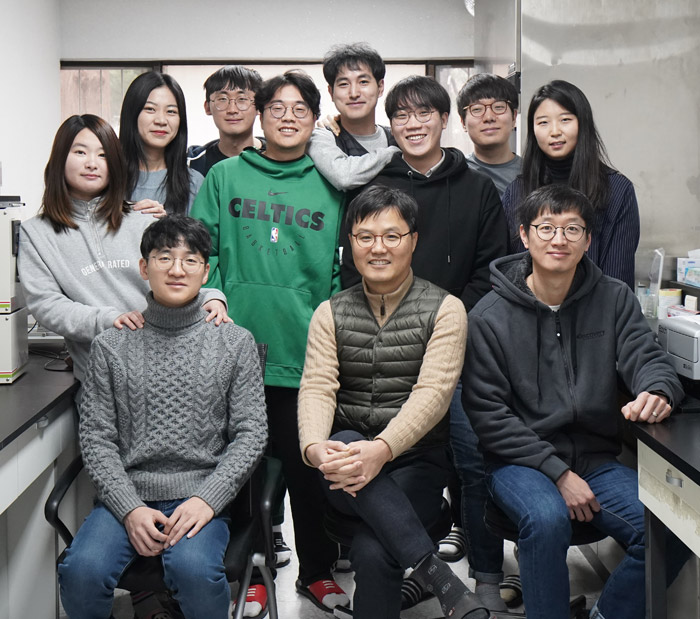Development of 3D Muscle-Mimetic Cell-Laden Nanofiber via Cell-Electrospinning
Anisotropically arranged nanofibers enhancing muscle regeneration
 The research team of professor Geun Hyung Kim at Sungkyunkwan University reported information about novel bioink and 3D cell-printing techniques for successful regeneration of defected muscles after VML. The research was published in the October issue of the journal Nano Letters (Impact Factor: 12.279) and in the November issue of the journal Biomaterials (Impact Factor: 10.273).
The research team of professor Geun Hyung Kim at Sungkyunkwan University reported information about novel bioink and 3D cell-printing techniques for successful regeneration of defected muscles after VML. The research was published in the October issue of the journal Nano Letters (Impact Factor: 12.279) and in the November issue of the journal Biomaterials (Impact Factor: 10.273).
Muscle tissues showed long fibrous bundles with uniaxially aligned myotube structures. To successfully regenerate volumetric damaged muscle tissue, muscle cells should be provided structural guidance from the matrixes to efficiently induce myogenesis and form oriented myotubes. By controlling the alignment of components in the bioinks using the 3D cell-printing process, Prof. Kim was able to obtain biomimetic muscle constructs.
Prof. Kim’s research team developed two efficient processes to induce cell alignment and growth:
i) The researchers developed novel bioink containing cells, collagen type-I and gold nano-particles. They manipulated the alignment of gold nano-particles in the bioink by flow-induced shear force and electric fields, and the cellular orientation and myogenic differentiation was induced by the interaction between the cells and the oriented nano-scale particles. Furthermore, the developed muscle constructs were implanted in the volumetric muscle loss (VML) rat model, and the damaged muscles were fully remodeled and successfully regenerated after 8 weeks without fibrosis (Figure 1). [1]
ii) The researchers developed a photo-crosslinkable decellularized extracellular matrix (dECM) derived from skeletal muscle. To induce cellular alignment, they mixed cell-laden dECM bioink with poly(vinyl alcohol) (PVA). They could obtain a cell-laden uniaxially aligned fibrous dECM-Ma muscle construct using the bioink by flow-induced shear force during the 3D cell-printing process. The muscle construct efficiently induced cellular orientation and myogenesis by providing topographical and biochemical cues (Figure 2). [2]
Prof. Kim said, "We showed the novel cell-printing concepts for inducing muscle regeneration by manipulating the orientation of nano-scale particles and basement materials of bioinks. The newly developed cell-printing techniques showed phenomenal potential for regeneration of skeletal muscle tissue. We also expect that our research will provide a basis to develop regenerative substitutes for other tissues showing aligned structures such as tendons, ligaments, and cardiac muscles."
The research was supported by a grant from the National Research Foundation of Korea funded by the Ministry of Education, Science, and Technology.
[1] W. J. Kim, C. H. Jang, * G. H. Kim, * A Myoblast-Laden Collagen Bioink with Fully Aligned Au Nanowires for Muscle-Tissue Regeneration (Nano Letters, IF=12.279), 29, Oct. 2019.
관련 뉴스: https://www.yna.co.kr/view/AKR20191126110900063?input=1195m
[2] W. J. Kim, H. Lee, J. U. Lee, A. Atala, J. J. Yoo, S. J. Lee,* G. H. Kim,* Efficient Myoutube Formation in 3D Bioprinted Tissue Construct by Biochemical and Topographical Cues (Biomaterials, IF=10.273), 13. Nov. 2019.















